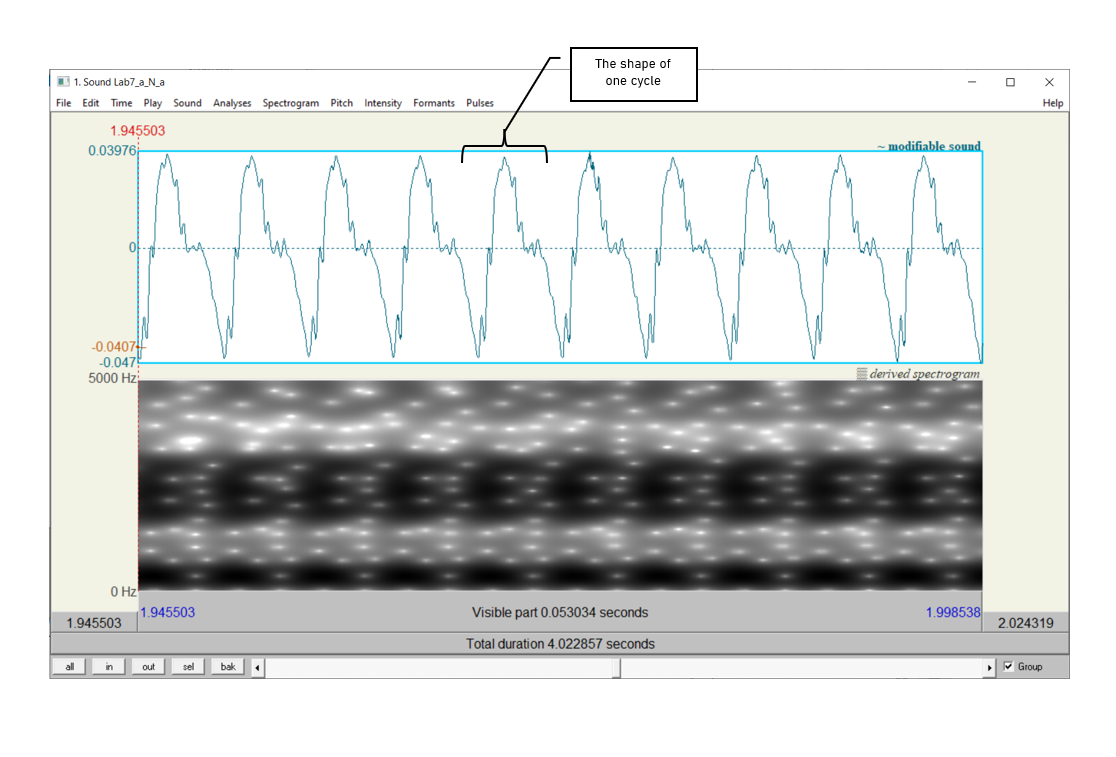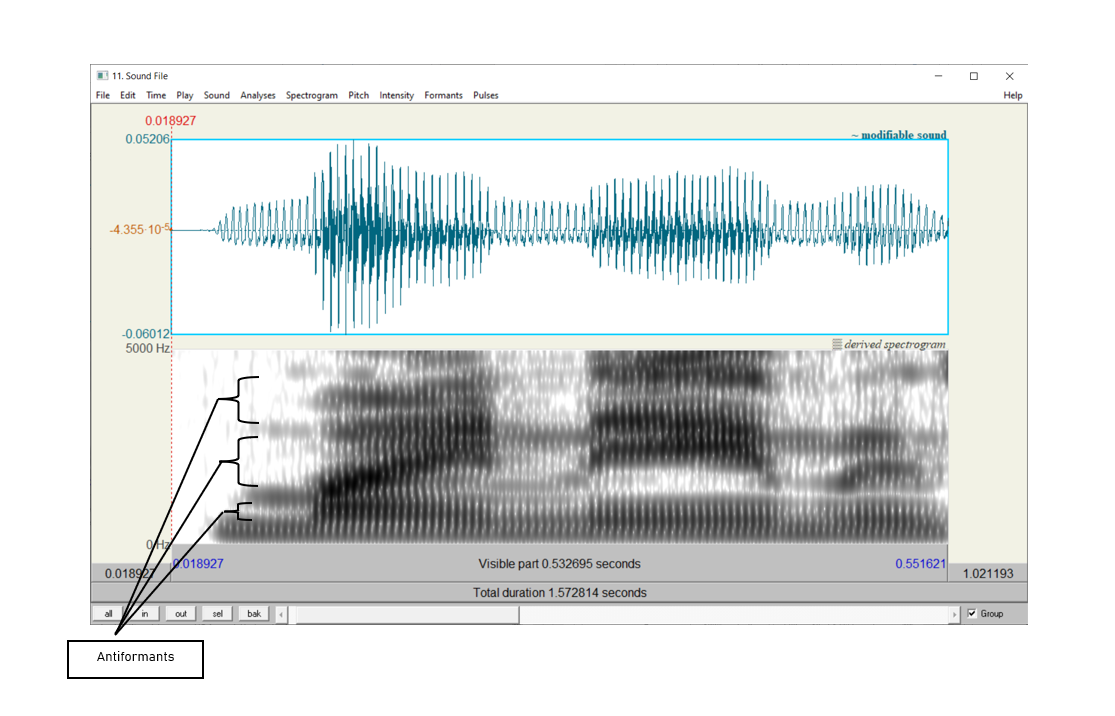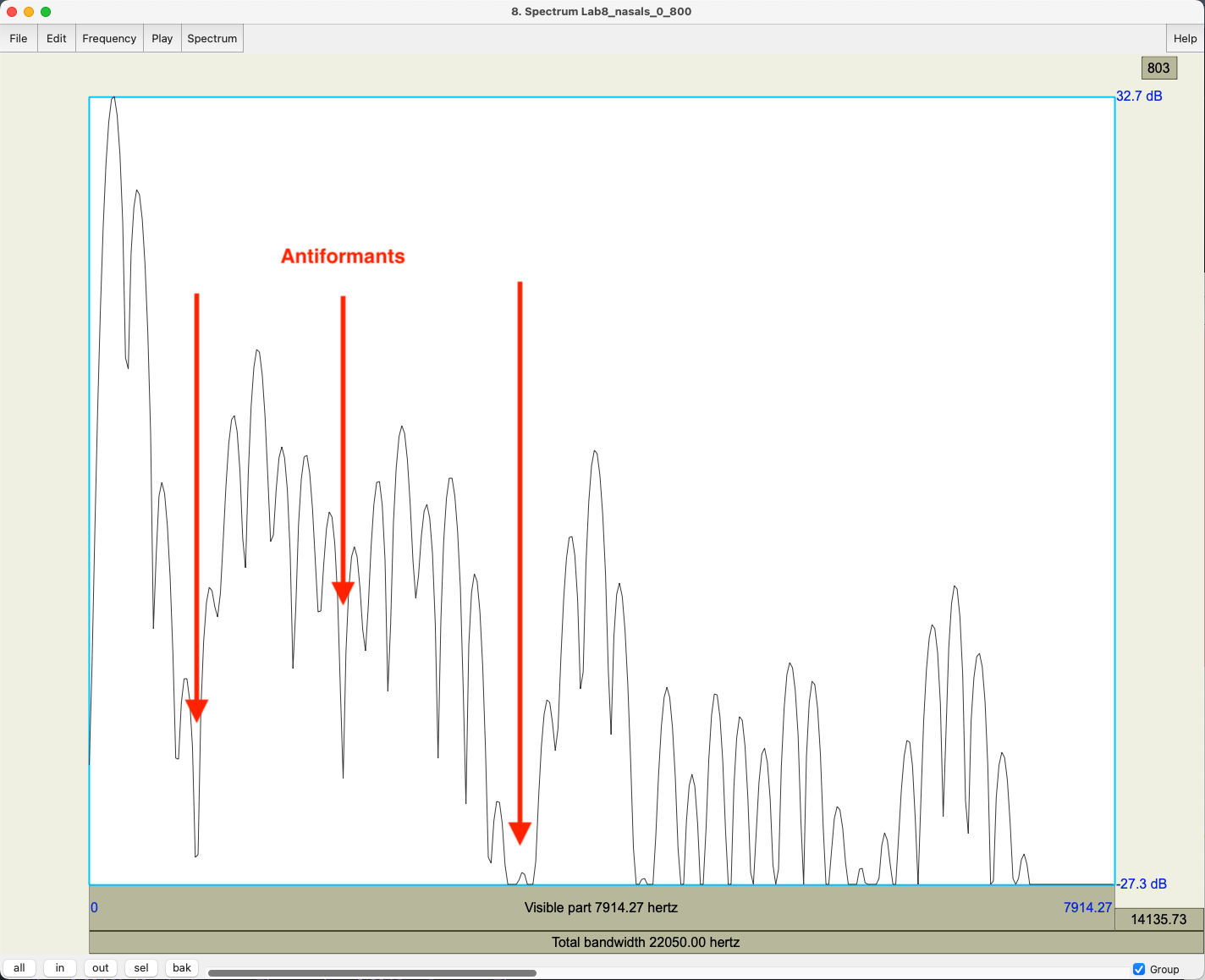Lab 8: Nasals
Thomas Kettig, based on work by Sonya Bird et al.
Goal of Lab 8:
In this lab, we are going to explore the acoustic correlates of another class of sonorants, the nasals [m n ŋ]. Like other sonorants, nasals are:
- similar to vowels in that they have formants
- different from vowels in that they are generally lower amplitude (and behave as consonants phonologically), and have a more complex spectral composition.
SOUND FILE
Find the file “Lab8_nasals.wav” on eClass and download it.
| File name | Sounds |
|---|---|
| Lab8_nasals.wav | ama, ana, aŋa |
In this lab, you should focus on what is common between all three nasals.
INSTRUCTIONS
- Open the file “Lab8_nasals.wav”. Follow the instructions below to fill in Table 8.1 on the acoustic correlates of different nasals.
A. Nasal F1 Values
If you can’t remember how to measure formants, refer back to Lab 4.
- In Table 8.1, note down F1 for each nasal, as measured in the centre of the nasal.
B. Spectral slice
- Create spectral slices for each nasal and for one example of [a], from a 30ms selection for each sound (see Lab 7 for how to take a spectral slice). Take a screenshot of each spectral slice and paste them into your lab report document. Be sure to give each spectral slice an appropriate title.
C. Waveform
- Nasals have very distinctive waveforms. To see this, zoom in on 10 or so cycles of each nasal. Take a screenshot of the visible waveform of one of the nasals and paste it into your lab report. Make sure to give the waveform an appropriate title. Now do the same with an equivalent portion of one of the [a] vowels, and also paste that into your lab with an appropriate title.

D. Antiformants
Antiformants are the opposite of formants – they are bands of frequencies that are actively damped rather than amplified (we’ll talk about this in class). They show up on the spectrogram as bands of white, i.e. bands of ‘silence’ at particular frequencies (Figure 8.2). For finding antiformants, you may find it easier to get rid of the formant tracking. You may also see them in the spectral slice as deep “valleys” in the spectrum (Figure 8.3). They can be difficult to see, so don’t worry if their measurement seems hard.
- Again, in Table 8.1, note down the centre frequency of A1 (Antiformant 1), A2, and A3 for each nasal, as measured in the centre of the nasal.


LAB 8 REPORT - NASALS
Table 8.1 Acoustic correlates of nasals
| Correlates | [m] | [n] | [ŋ] |
|---|---|---|---|
| A. F1 | |||
| D. Antiformants | A1: | A1: | A1: |
| A2: | A2: | A2: | |
| A3: | A3: | A3: |
Q1: Look at your measurements of F1 for the three nasals. Do these measurements vary across different places of articulation?
Q2: Compare the spectral slices of the nasals vs. [a] – do you see any overall differences between the nasals on the one hand and [a] on the other? (Relate this to your answer to Q1.)
Q3: How does the shape of the waveform of the nasals differ from that of [a]? What causes this pattern? (Relate this to Q1 and Q2 above.)
Q4: Are there any systematic patterns across nasals in terms of antiformants? Is there one antiformant with a similar frequency for all places of articulation?
REFERENCES
Q5: Provide a reference and very brief summary of one academic paper that uses the methods covered in this lab.
Disclaimer: The original lab materials on which this lab is based was put together in 2015 (updated 2019) by Sonya Bird, Qian Wang, Sky Onosson, and Allison Benner for the LING 380 Acoustic Phonetics course at the University of Victoria. Their materials are released under a Creative Commons license (CC BY-NC-SA 4.0) which allows for non-commercial use as well as copying and distribution and the creation of derivative works for non-commercial purposes. Thomas Kettig (with assistance from Taylor Potter) has modified these materials as needed for the York University LING 4220 Acoustic Phonetics course.